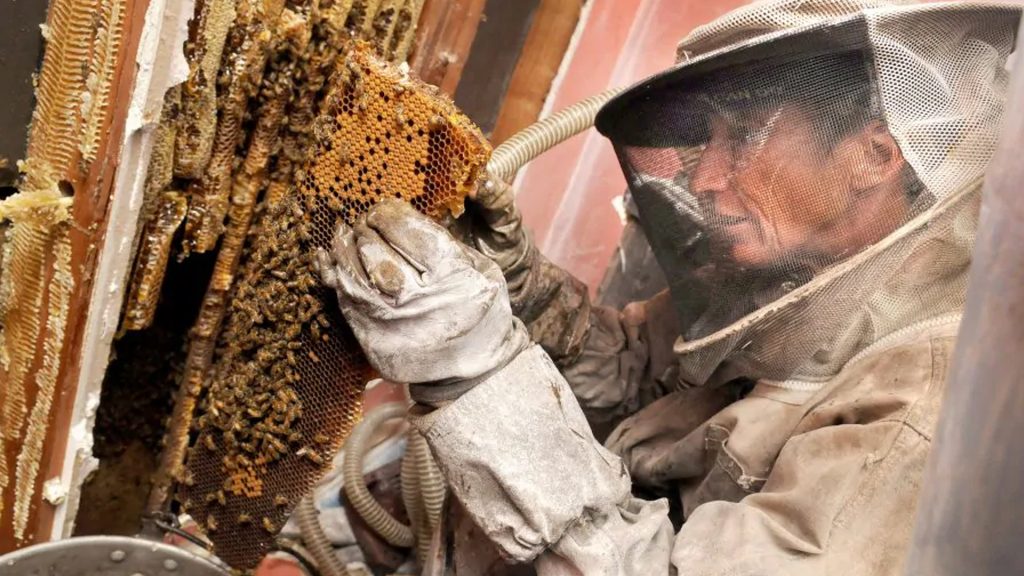Apis mellifera is the scientific name of the bee, given by Linnaeus. But within its name, we find the term beast, which matches its aggressive behavior.
Typically bees are hardworking workers who pollinate flowers, produce wax and honey living in a hive. But some bee breeds are emotionally unstable and get annoyed with anything different. So, it is essential to undertake bee swarm removal if the bees become aggressive.
Some features and tips to know about these insects:
As we see, every side has two coins. Bees have been useful to man for thousands of years, and result from a selection among several races. The most common bee in-country is the result of mixing a native variety with the famous African bee. Yes, herself! That is, its honey productivity is high, but it has a short fuse.
Bees are particularly dangerous when they are swarming to form a new colony. The disputes between the possible queens heightened tempers, and they attack simply because of the prevailing climate in the swarm. And the bigger the flock, the more likely they are to start an attack. On the other hand, a lone bee that, for example, enters your tent, is only looking for nectar, and will only sting if it feels threatened.
We have heard about the bees from our parents and grandparents that the bee swarm is very dangerous. We never try for the bee swarm removal but call the professionals to do so as they may bite us.
It states that melatonin (beehives or swarms) that are at risk, in condemned places or housed in inappropriate and inhospitable places that endanger the lives of colony members, must be rescued by properly registered meliponiculturists (specialized beekeepers) in the municipality.
The following are a consideration at risk for bees:
The electric grid, street furniture, the building of any nature with the risk of collapse or authorized reform, and the trees cleared for cutting. If there is a nest or beehive in public or private construction to demolish, a tree to be removed from its base or a power pole to be removed, the removal of the meliponin should request by a duly registered responsible technician.
Allow the best alternative to obtain each rescued nest, hive, or colony. And to guarantee viability in better conditions, relocation of the products from situations provided by the law is allowed. In the event of the meliponiculture activity being close, all colonies obtained from the circumstances provided for by law shall donate to another meliponary registered in the state.
Penalties:
Violators will be subject to the penalties provided for by Federal Law 9,605 of February 12, 1998, and the relevant civil and criminal law. After notices and warnings to cease the irregularity, the violators will be subject to a fine of 120 monetary units of the state. In the third assessment, the penalty will be charged twice the amount of the first assessment, and so on. The new standard also repeals the effects of Law 9,810 of November 16, 2010, and enters into force on January 1, 2020.
How can you remove swarm easily?
Locate the swarm for the bee swarm removal and analyze the needs for its removal – if it is on the roof of the house, for example, hammer, screwdriver, and the ladder are required. Wear full PPE. Direct jets of smoke into the swarm entrance with the smoker.
Open the hole further to reach the combs using tools. Cut the combs one by one, removing the bees and storing those containing honey in the bucket.
Cut out and transfer to the hive, only the brood combs. Secure them to the wireframes. Make sure that the combs are placed upright, straight, and top up.
Arrange the frames containing the brood combs in the most central part of the hive and fill the frame sides with the laminated wax. When you accommodate everyone in the colony, close it. Collect the adult bees, and eventually, the queen, who remains where the swarm was previously installed (using gloves and small shovel or cardboard).
Settle the hive where the swarm is installing so that the first bees can enter. Wait a few days and transport the colony at night to an apiary in the countryside. Close the hive.




